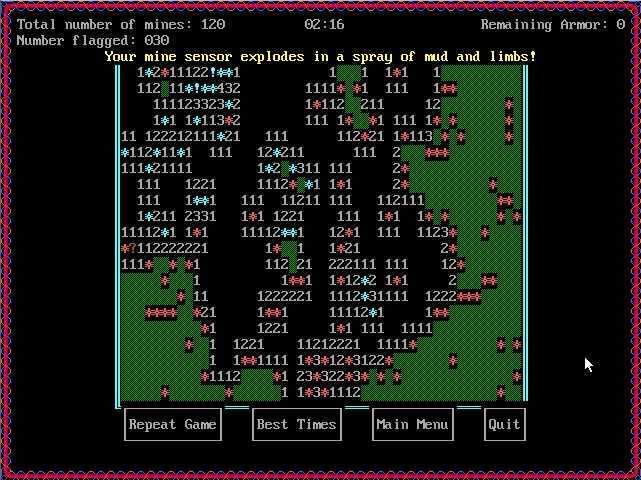
Mine Find
- Year1993
- StrategyClear Mines
- PlatformDOS || MS-DOS
Mine Find - Game Overview
Mine Find was written for DOS in 1993 by Edward Henigin.
You are a lone minesweeper, searching a field for mines. You know how many mines are out there, but you don't know where. Your machinery, however, is odd. Instead of telling you where the mines are (that would be too easy), it tells you how many mines there are on *adjacent* squares. Each square has 8 squares surrounding it, so your mine sensor may return a number between 1 and 8. If there are no mines adjacent to the square, it opens up blank, and opens all of the squares around it. Clicking the left mouse button will test the square that the mouse cursor is on.
Using the powerful tools of logic and your wonderful mine sensor, your job is to open up all squares that *don't* have mines on them, in the least amount of time. Each time you make a mistake, and open a square that has a mine on it, it will explode, damaging your armor (if you have any). Once you open all unoccupied squares, the game will end. If you think you have opened all unoccupied squares and the game hasn't ended, it is because you are wrong and haven't finished. If you are fast enough, you may be able to add your name to the 'Best Times' list.
A second tool you have at your disposal is the ability to flag. Clicking the right mouse button will flag a square. A count of the number of squares flagged is kept in the upper left hand corner, right below the total number of mines. The flagging of a square has nothing to do with whether or not there is actually a mine there, flagging is just a utility for your convenience, to help you keep track of where you think mines are. If you have flagged more squares than there are mines, you know that something is wrong. Clicking the right mouse button on a square that is already flagged will change the flag to a question mark. Clicking on that once again will return it to its untouched state.
The main menu presents with you with the current settings. "Difficulty" determines how many mines there are in the field. The higher the level of difficulty, the more mines. "Size" determines the size of the field, from small to huge. "Armor" determines what level of armor you will have when you play the game. No Armor means that you will die when you explode one mine. Light Armor allows you to get hit twice safely, and Heavy Armor allows you to get hit four times safely. The last two are useful if you ever want to finish Expert Huge.
Seperate "Best Times" rankings are kept for each of the 12 combinations of Difficulty and Size. Each Best Time has the Armor Level saved, too, so you can't get an excellent time without people knowing that you used Armor. Resetting any set of Best Times will only affect that particular set. One way to reset *all* of the rankings is to delete the Best Times file, as Mine Find will create a new one whenever necessary.
The game has marks and questionmarks but no chording. When you lose there is an option to replay the same game.
Version History
A list of all known versions sorted by platform then version. Email admin@ if you have more! See the Downloads section for available files.
| DOS | 1.00 | Original release. |
Pictures
Screenshots are sorted by platform then version.

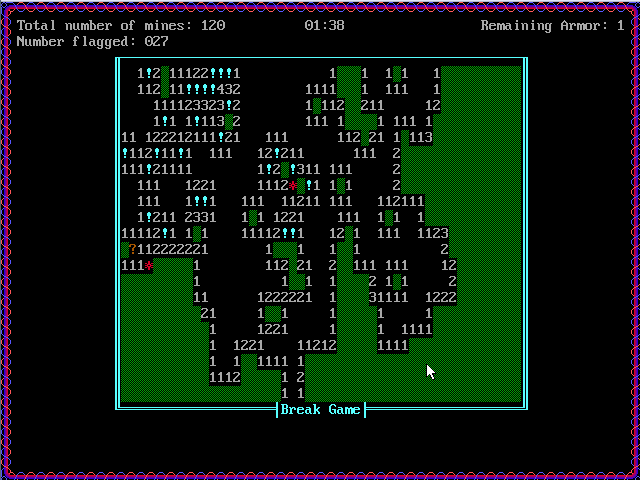
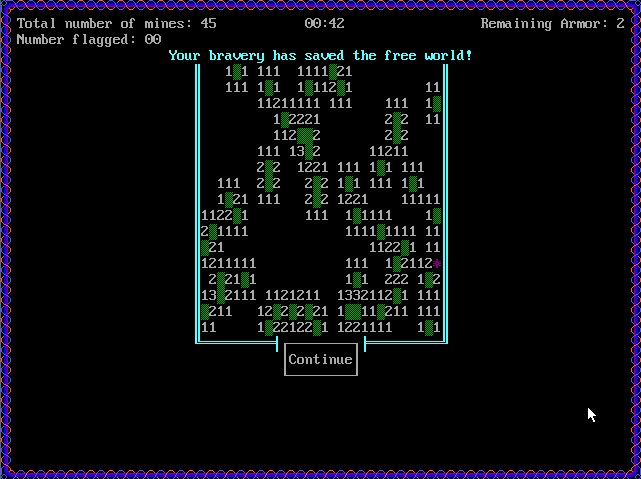
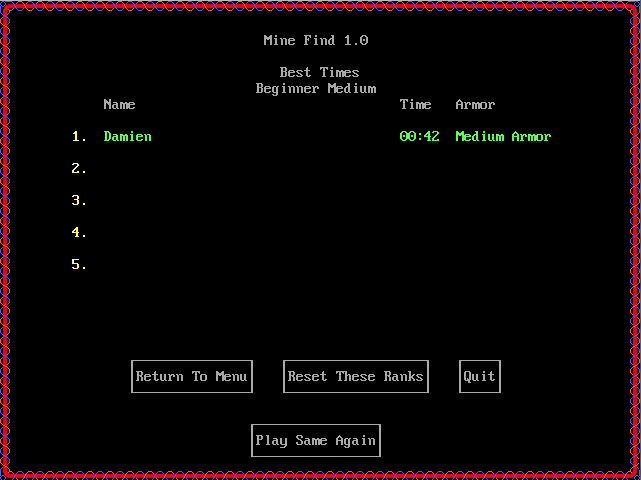
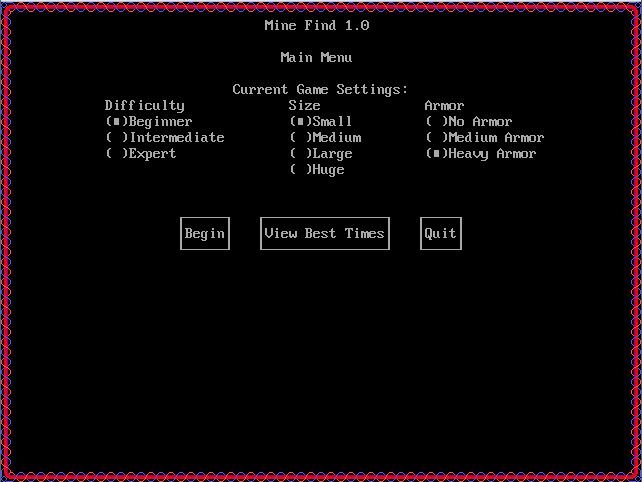
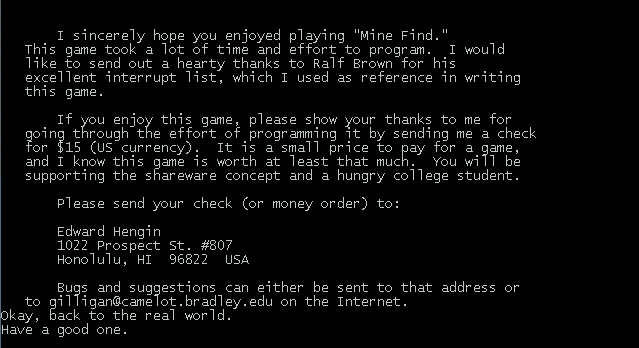
Downloads
Versions are listed by platform, version, year, earliest known date and source of the date information.
| DOS | 1.00 | 1993 | 1993-01-16 | Documentation |
|
Credits
People and companies are listed by platform, version, name, role and source of the information.
| DOS | 1.00 |
|
Game Links
Dead sites are often available at archive.org.
No links found.Entity Links
Dead sites are often available at archive.org.
- https://www.linkedin.com/in/edwardheniginLinkedIn profile for Edward Henigin.